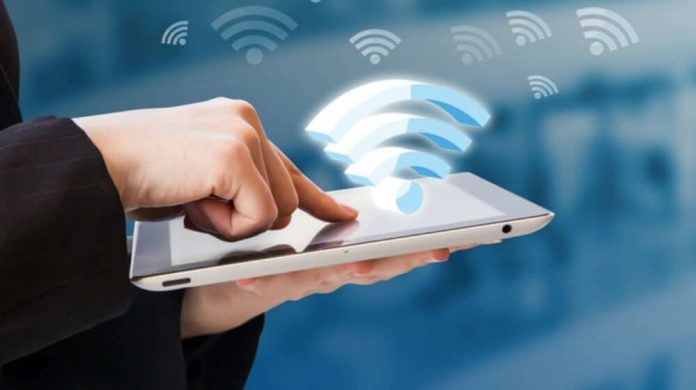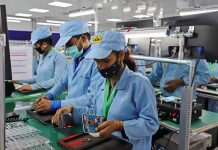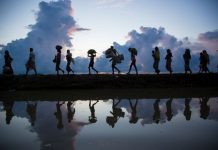This article is written by Gitika Jain, from Amity University, Kolkata. This article deals with the coronavirus battle with wireless networks.
Table of Contents
Introduction
The beautiful earth has turned into a death bed. Almost 7 and a half lacs people have so far lost their lives with the tolls increasing to the tune of 5000 every day. The social, provincial and pedagogical frameworks have been shattered. In the absence of any medicines or vaccines, the only solution left to contain the spread of this COVID-19 disease is byways of social distancing and self-isolation. This disease spread silently through silent carriers which means that those spreading the Wuhan virus don’t even themselves know that they are infected. On having got the virus, the symptoms then slowly and gradually start to appear (usually after 2-3 days from contracting) with fever, fatigue, and loss of sense of taste and smell. If the situation goes worse the patient experiences difficulty in breathing and in the worst circumstances dies being unable to breathe.
In order to promote self-isolation and social distancing, every economy is now focusing on virtual communications rather than physical one’s, promoting virtual education and conference systems enabling healthcare automation and also to keep a check on the regions that become overcrowded with the help of communication technologies. Researchers from all over the world and across different fields such as biomedical, virology and artificial intelligence are contributing in every way they can to contain the spread of the Wuhan virus unless and until we have a treatment for COVID-19. The business activities worldwide have become excessively dependent on virtual communications and digital technology. Use of robots to assist medical practitioners, drones to monitor the population density in different regions, and artificial intelligence for understanding the trends in the growth or the containment of the spread of COVID-19.
In fact, the International Telecommunication Union (ITU) directed the governments and industrial authorities at different levels to improve communication networks at sensitive places such as hospitals.
COVID-19 lockdowns and their effect on networks
Around the world, people are asked to minimise physical contact and interactions. We entered into the era of the internet where almost everything is being driven online be it news communication education or work. In the early phase of lockdown, social media and messaging applications saw a hike in its uses. The well-known messaging app WhatsApp saw an increase of 117 to 217 % during the day 1 of lockdown and an increase of five hundred percent on the first Sunday of lockdown. Netflix witnessed an increase of 97% in its traffic volumes in the early hours of the first day of lockdown and an average of 20% considering the entire day.
Fighting the pandemic
As already discussed, the only way to contain the spread of this disease is social distancing. Virtual learning and healthcare automation, tracking the population to figure out the at-risk regions are the need of the hour.
Monitoring the spread
Wireless communication such as using drones for identifying the regions where crowds are gathered and using cellular positioning system and global positioning system. Drones can also be used to monitor the temperature which can give a first-hand idea about the presence of the virus in the human body.
Another way to contain the spread of this disease is by way of contact tracing. Google, Facebook and Apple all have come forward to help the researchers with the GPS based mobility data of the users for contact tracing. Some of the researchers also came up with mobile applications where the user can input his temperature and other symptoms and the application using artificial intelligence can give an estimate of whether the user is probable to have the disease and can take timely actions. Not just outdoors but measures are even taken for indoor monitoring to contain the spread of COVID-19. A solution that has been recently developed is Proximity Trace in an organisation to ensure that the workforce maintains a safe distance while continuing the activities of the business. A tag is attached to the back or somewhere on the attire of the worker that transmits real-time alerts when two workers come in close proximity. In this manner, industries can start regular operations though on a small scale while at the same time controlling the spread of COVID-19.
Using cellular networks to identify at-risk areas
A little about technology
Cell re-selection
This is a process by which a mobile phone or a similar device finds a better cell among various available cells considering the different levels of signal strength from those cells. The reselection of a cell is only possible when the user equipment or the mobile phone is in Idle mode meaning that there is no data traffic or incoming or outgoing call carried out from that device.
Handover
Under this process, the mobile phone or a similar device moves to a better cell while on a call or during ongoing data traffic.
You cannot control this reselection and handover process. This is something that the MODEM will decide for itself. At a maximum, you can decide the preferred network type for example 2G, 3G or LTE.
The idea behind using this network functionality to control the spread of COVID-19
As almost everyone is using a mobile phone (called user equipment (UE)) nowadays, the frequency of handover and cell re-selection can help in figuring out how the population in a specific location is moving across different cellular networks. This can help us identify the regions at risk without alleviating the privacy concerns as the data is anonymously collected. By analysing the logs from these handoffs the regions can then be subjected to further monitoring and people could then be dispersed to other areas to lower down the risk.
Method of action
This method is not like some of the mobile applications like Arogya Setu which has serious privacy concerns. Here the user does not have to perform any action. The aggregate density in a particular location is assessed without going into details at an individual level by using existing cellular-network functionalities.
The situation of importance here is the presence of infected people in areas with high mobility of non-infected people. These areas are called at-risk. The areas where mobility is not high for example residential areas where people remain at home are not considered at-risk. We use the conventional handover and cell selection strategies to keep a check on the moving pedestrians as they move between cells and ignore the handover and cell selections that are resulting due to the moving vehicles which are not our major concern as they do not contribute much in spreading this virus. Thus the regions with a high frequency of handovers and cell selections can be defined as at-risk regions. The motive here is to understand the long term behaviour of the people in an area rather than the short term mobility.
This method, however, has a small drawback of giving false alarms. False alarms are those events in which the system detected a region to be at risk even when it was actually not. But since we need to be conservative at this point in time to contain the spread of this virus false alarms can be afforded to some extent. This methodology of handover and cell selection is not just useful to identify the areas at risk but it can also be utilised to give estimates, for example, of the proportion of people staying indoors.
Healthcare automation
This refers to the use of robots that can do works similar to human beings like delivering medicines, checking the temperature of patients and disinfecting rooms in the hospitals thereby reducing the physical contact between personals to control the spread of the virus. It not only helps reduce the physical contact between persons but can also circumnavigate the problem of the shortage of PPE kits. The final impact is increased satisfaction of patients and higher readmission rate.
Virtual education and conferencing
Schools and colleges have not been opened for months and the COVID-19 pandemic has forced these educational institutions to impart education online as a measure to maintain social distancing. Imparting education online in some cases can even be a better option compared to the good old school methods in that the teachers and the students both can access the pool of resources available across the internet. However, not all students and teachers have access to high-speed internet connections and devices that support digitisation. Here, the government can help low-income households by providing them with digital devices and internet access. With the emergence of 5G users can now have a seamless experience of augmented and virtual reality. Remember Jarvis from Iron Man. You can have one for your own with virtual reality.
Challenges
The positive impact of the wireless technologies in combating the COVID-19 pandemic cannot be overlooked. However, there are serious concerns relating to privacy, security and misinformation that arises due to advancement in technology.
Privacy
Various applications have been launched for contact tracking to contain the spread of the virus. These applications use the data from the user about their location and use them as a surveillance tool. However, this might become a problem in the future after the end of the pandemic in the sense that human rights might be at stake. Under such circumstances the government needs to come up with the answers to the following questions:
- Can the user delete his or her data after the pandemic is over?
- Who will be able to access this data and what are the rules governing the sharing of this data?
- How long will the data remain with the governments?
In a similar manner, the use of drones in public places to look for sick people via aerial surveillance can also cause a breach of privacy and freedom.
Security
The number of cybercrimes has seen an increase of 30% in March 2020. The tremendous use of mobile broadband connection due to the COVID-19 pandemic is the reason for this increase. As we move up in the ladder of technological advancement the risk of cybercrimes is bound to increase.
Misinformation
The world is full of idiots, half of them spreading misinformation and the other half reacting madly based on the rumours. In the months of April and May, there were incidents where people set on fire the mobile towers with 5G network guided by the misinformation that these towers help to transmit the COVID-19. Nearly 50 fires at the cell towers have been reported in Britain alone. What could be more disgusting than the fact that the very infrastructure that is needed in the country at this time of pandemic is being shattered by the countrymen themselves? Even Twitter said that it would remove any tweet that may result in mass incitement to action.
How telecommunications providers are responding
The actions and policies taken up by the telecommunication providers play a crucial role in responding towards COVID-19 pandemic. It has now become an important point for telecommunication providers to think on how they can bring new subscribers to their network to provide the best services and relief to their existing subscribers and also to ensure a high quality internet available for the public at large. It is not the time for them to think of maximizing profits because they should feel their responsibility towards human rights and the public health that they can promote via their services. Their goal should be to serve the communities at large.
In India, many internet service providers like Airtel Reliance Jio and Vodafone are coming up with new data plans with extended validity. Airtel is providing a whopping 1gbps speed over its fibre network.
Recommendations for the telecommunications providers
- The telecommunication providers if possible should waive off the late fees and subscription fee without imposing any future burden on its customers.
- The companies can extend the limits for the data and voice plans so that they cannot just work efficiently but can also connect and communicate better with their family and friends at this time to take off the loneliness.
The changes in the policies and practices that were brought about by the telecoms providers should not just be put on their website but rather should be directly conveyed to the customers for the ease of understanding. They should also try the implementation of these policies as easy as possible for the customers.
Telecommunication providers should upgrade the network so that a greater number of connections can be accommodated. The essential resources and equipment should be redistributed so as to make the increased connectivity available to the public.
How governments and regulatory agencies are reacting
The policies implemented by the government during the outbreak of the COVID-19 can either protect or harm the rights of the citizens. It is in the hands of legislators, ministers and telecommunication regulators whether to protect people against the abuses of the private sector in the difficult times of the pandemic such as price gouging and put into action the policies and regulations so as to enable and expand the access of internet services for the general public. But on the contrary to this, the government officials are shutting down internet services and levying heavy taxes for accessing the online platforms thereby depriving the citizens of their basic rights in this pandemic. At this time of public health crisis, the internet is the only way in which we can save many lives. Access to internet services has now even been considered as a fundamental right by the Supreme Court of India. Apart from breaking down the internet services the government has restricted access to several social media websites interfering with human rights. It is, therefore, necessary on the part of the government to remove rather than impose barriers to the internet connection.
Most of the examples of violation of human rights by the government can be seen in Jammu and Kashmir regions of India where the government has imposed severe internet restrictions since August, 2019. Internet services have been shut following the removal of Article 370 and continued to remain so even at the time of endemicity. After the intervention of the Supreme Court of India, the government restored code access to the internet but only to 2G services. The result is that the medical infrastructure has collapsed and the doctors are unable to help the patient’s online.
Recommendations for the government
- The internet services should not be shut down under any circumstances.
- People should have free access to any information without any interference. Deliberate manipulation of the network to silence or to favour voices or contents with a view making profits or promoting political agendas and propaganda.
- Net neutrality rules and regulations to be passed by the government.
- It is the responsibility of the government to make the internet accessible particularly for families with low incomes. This may require an investment of capital for subsidies by the governments.
- One of the ways in which the government can help extending internet service is by allowing the temporary usage of the unused wireless spectrum.
- The telecommunication service providers will always have a profit motive in their minds and will therefore refrain from providing services to some areas of low-profit zones. The role of the government, in that case, is to jump in and provide the necessary infrastructure.
Survival of the economy
The COVID-19 pandemic has brought about an unprecedented economic loss throughout the globe. The harsh reality is that we are in a situation where we have to make the decision about whether to save the economy or save more of our lives. Wireless communication in such a situation can help keep both alive.
Impact of COVID-19 on the global economy
The governments are in a position where they have to trade the lives of the people who are going to die of the coronavirus in order to save the economy from damage. The prices of every commodity have plummeted. Stock markets are seeing a downfall. Investments are low and the gross domestic product growth has seen the worst of its figures in this year crashing the economies globally. China is responsible for making one-third of the products throughout the world and since the Chinese industries have been shut down the entire world is seeing a delay in the supply chain. For example, the various tools and machinery that are required for the manufacturing of a car are seeing a delay of 1 to 3 months due to lockdowns in the manufacturing sector of China. Thus, the final launch of the cars cannot be made possible on time and the companies are undergoing losses of millions of dollars. In the worst-case scenario, the companies may even go bankrupt. Oneweb is an example that collapsed in the midst of the pandemic. Needless to say, the tourism industry has shut down entirely which accounts for a bulk share of the government’s revenue.
Automation of industries and supply chain
As already discussed the supply chain has been broken down due to the impact of COVID-19. However, the internet of things can help restore the supply chain. The digitisation of factories with the manufacturing units utilising smart sensors can help combat the breaking supply chain. This leads to better control of industrial activities with remote monitoring. This requires an uninterrupted flow of high Internet for real-time monitoring of the production processes. Further with the advent of 5G technology companies can measure the demand prevailing at this time and react dynamically.
E-commerce
In a scenario where millions of jobs are lost e-commerce has held back the job opportunities of another set of millions of workers whose jobs have been lost otherwise. For example, restaurants are being closed but online delivery services are still open. Amazon recently announced that it needed nearly 175 thousand more people to fulfil the demand for online purchases from its customers. The technological advancements like the advent of 5G connectivity along with the internet of things and artificial intelligence all combined together will give a seamless experience to the customers with faster data transfer and will even help the companies to track real-time inventory and for smoother management of its processes. A study by Adobe digital says that due to the 5G Technology the revenue of The e-commerce industry is expected to increase by 12 billion dollars or more by the end of the year 2021.
Support in the occupations at risk
Working with the virus being there is the new normal. Bus drivers and factory workers have no option but to keep working to earn their living and at the same time adopting all the measures necessary to keep away from the virus. Digital technologies can give a great solution. Labourers need to equip themselves with smart sensors on their uniforms which will actively alert them when they are not maintaining minimum distances from their co-workers. In this manner, many jobs are saved from being lost though only at the cost of some risk to the worker.
Flattening the curve
There is no other option for the government but to keep the economy going. Deciding the problem of rising unemployment, the government also has the responsibility to look after the nutrition and availability of clean water to the people during this time. Shutting down for a long time can ultimately flatten the curve but with people losing their jobs and in many cases dying out of hunger. There would then be a transition from viral pandemic to a hunger pandemic. Digitisation comes with a solution but has its own challenges. This new normal of the new technological revolution is going to have its impact beyond pandemic.
The new normal
The COVID-19 pandemic era has brought about a lot of devastation but the only thing that it could bring for good is the advanced technology and most of the people using the technology for communication even in the post-pandemic era.
The rise of telehealth
As per a report by statistical, the revenue that is going to be generated by the global telehealth sector is around 330 billion dollars in the year 2025. The COVID-19 has given telehealth a push without which this much advancement in the telehealth sector would not have been possible. 5G technologies along with virtual and augmented reality are going to bring about a revolution. It not only makes communication possible remotely but also reduces travel expenses for example you can now consult the best doctors in the world from anywhere online.
More connected world
Throughout the world, audio and video applications like Zoom, Google Meet, Skype and Microsoft Teams are helping teachers and students to connect for e-learning as well as the coworkers for teleconferencing. Blending 5G technologies and augmented and virtual reality techniques can make learning even more attractive for the students. The internet will now be accessible by the people of rural areas.
Improved cybersecurity
The growing concerns about cybersecurity have now been accepted worldwide that have been at 30% increase in cyber crimes in the wake of the Corona pandemic. With the increase in e-commerce and online businesses, the threats of cybersecurity are likely to increase as more and more people get connected to the internet. The Tools and techniques that are developed during the pandemic for robust cybersecurity will help online businesses in the future.
The IoT (Internet of Things) revolution
The Internet of Things is a complex network of technical digital and mechanical devices that has the capability of transferring huge amounts of data over the network without any human intervention at any level. The world is moving towards automation in almost every sphere. Doctors and nurses being assisted by robots digitalization of industries with most of the manual labour being replaced with machines all this is possible with the exceptional growth of IoT networks. IoT intensified with the powers of 5C will build smart cities that would go beyond our imagination.
The IoT can help combat COVID-19 with its following processes:
- Monitoring health data of patients in remote locations.
- Setting up virtual meetings and conferences for better management.
- Data analysis and further monitoring and control.
- Presenting the report and following it.
Not just the treatment IoT can also help to screen the infected patients as well as for real-time supervision and surveillance.
COVID-19 and e-sports
Mostly, people have been staying indoors since March, 2020. People have been watching television and video contents more than ever because live sports have been postponed or cancelled. Meanwhile, e-sports have been filling up the spaces left by the live sports. For example in the USA, ESPN started to broadcast the Baseball League held in South Korea, Bella Russian football is broadcasted in India and Israel. When the Nascar races were aired on Fox in the USA, several professional drivers participated with viewers count of more than 1 million. This figure is considerably lower than the usual for girls of 227 Million for the traditional races. The various sports celebrities have helped to promote esports into the new audience and even among those who are not familiar with it.
E-sports can never replace live sports but can help reduce the negative impacts of the COVID-19 disease. Traditional sports are sure to be back when the competitions restart but esports have helped to fill the gaps for time being.
Conclusion
Wireless communications are helping the lot in our fight against the COVID-19 as well as setting up the standards for the new normal in the post-pandemic era. From the surveillance and monitoring of the spread of the coronavirus to the diagnosis and treatment of patients, why are the internet of things remotely wireless communications help us build a stronger and more robust system? However, the concerns associated with wireless communication such as privacy, security and misinformation have to be addressed given the threats of Cybercrimes. The economy worldwide has doomed but whatever remains is mostly due to the grace of wireless communications that is keeping the employment in different sectors and the processes going in industries supply chains and e-commerce. At the other end of the pandemic is a world stronger than ever the people who will have the fruits of the trees, the seeds of which are sown today.
References
- https://ieeexplore.ieee.org/stamp/stamp.jsp?tp=&arnumber=911707
- https://arxiv.org/pdf/2005.06637.pdf
- https://www.ncbi.nlm.nih.gov/pmc/articles/PMC7198990
- https://www.accessnow.org/cms/assets/uploads/2020/04/Expanding-connectivity-to-fight-COVID19-Recommendations-for-govs-and-telcos.pdf
- https://www.analysysmason.com/contentassets/a09bc0ed37aa4aa6a61bcb8c5a7f6b53/analysys_mason_covid19_esports_may2020_rdvs0.pdf
LawSikho has created a telegram group for exchanging legal knowledge, referrals and various opportunities. You can click on this link and join:













